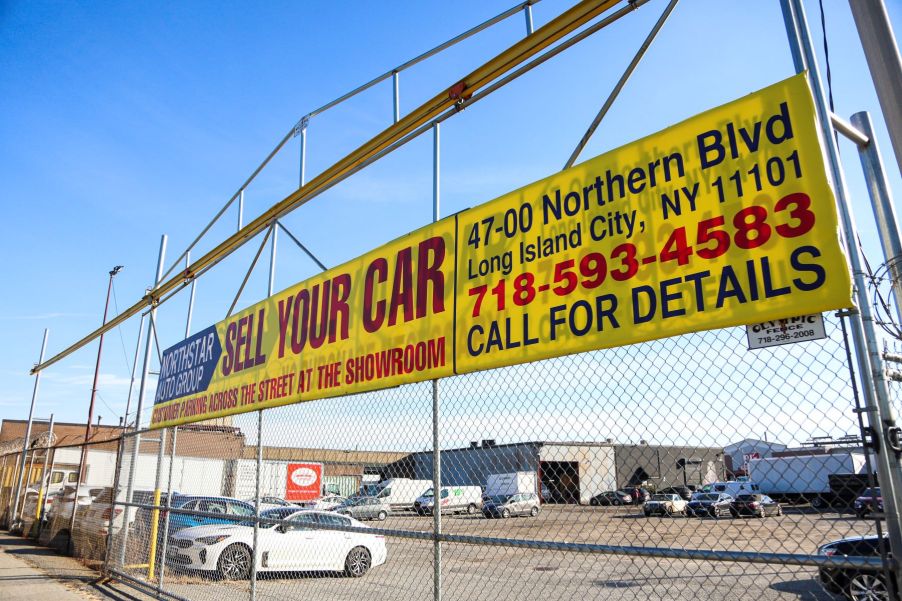
An Outrageous Amount of People Paid Over MSRP in January
Dishonest car dealers are a common cliche in mainstream movies, television, and fiction. While there are plenty of honest brokers out there, there are definitely dealers who will massage the truth or outright lie about a car’s value to make their commission. Unfortunately, when car buying, many dishonest dealers often succeeded in getting consumers to pay an outrageous amount over MSRP.
How the coronavirus affected the car sales industry

At the coronavirus (COVID-19) pandemic’s start, the automotive industry was thrown into chaos. Lockdowns meant consumers couldn’t get into showrooms, and remote work meant many didn’t want to. However, some consumers who retained their jobs and healthy savings accounts did want to take their stimulus checks and buy new cars. Others found themselves no longer able to rely on public transportation to commute and needed to purchase reliable vehicles.
The industry quickly adapted with virtual showrooms, at-home road tests, and home delivery of purchased vehicles. Additionally, as lockdown orders were lifted and consumers could return to showrooms in person, dealers found demand surging for a related reason: supply chain shortages.
Auto manufacturers found themselves lacking crucial car materials and components due to a combination of labor shortfalls, slower production, and travel restrictions. Commodities prices also spiked because many common metals couldn’t be mined quickly enough. Additionally, computer chips made mainstream news headlines as demand surged for computers, cars, and other everyday items. This caused a chip shortage, which persists to this day.
How dealers took advantage with price tags over MSRP
While most dealers struggled to keep inventory on the lot, some decided to take advantage. These dealers charged significant markups on a range of vehicles that went far above the starting MSRP (manufacturer’s suggested retail price). As The Drive notes, the markup for a new car in January 2022 was, on average, $728 over the starting MSRP.
However, this markup varies widely when looking at individual car models. For example, Cadillac buyers paid a whopping $4,048 over MSRP, while Land Rover buyers paid an extra $2,565. Even more affordable cars were not exempt from this premium. A Kia buyer likely paid $2,289 extra – a sizable 7.1% more than they would have paid pre-pandemic.
Despite the massive consumer demand for cars, some brands were so out of demand that dealers couldn’t mark them up. In fact, six brands – Alfa Romeo, BMW, Lincoln, Mini, Ram, and Volvo, usually sold below MSRP. However, the low starting price of these six brands was dwarfed by the much higher starting price of 27 other brands that charged a premium above MSRP.
Overall, an astonishing 82.2% of new car buyers purchased their cars for a price above MSRP in the first month of the new year. Keeping in mind that January is typically a slow sales month illustrates just how high demand has been.
Despite the pandemic’s decline, high car prices are here to stay
Unfortunately, January’s high prices of paying over MSRP are unlikely to be an anomaly. Supply chain challenges and computer chip shortages persist, despite many pandemic-driven restrictions being lifted. Many countries still face skilled labor shortfalls in critical areas like manufacturing and mining, making it more challenging to maintain strong domestic and international supply lines.
These challenges have also shed light on a critical industry facing increasing shortages: the trucking industry. Trucking is not for everyone, given the long hours and travel. Additionally, commercial licenses are not cheap, and new federal restrictions on criminal backgrounds have resulted in greater numbers of truckers being unable to get or maintain their license. Truckers have also recently made headlights for protests against coronavirus mandates and further snarling supply lines.
Adding to the chaos is the Russian invasion of Ukraine. EFT Trends notes that Ukraine is a crucial producer of car components that connect its mechanical and electronic parts. With the conflict, those parts are now harder to come by. Additionally, as many nations work to isolate Russia economically, many Russia-based plants have been shuttered and shipping lanes closed, making it harder for auto manufacturers to assemble and distribute vehicles to dealers.
So, while January may typically be a slow sales month, it’s not hard to imagine car buyers paying $1,000, $2,000, or more throughout the upcoming spring and fall.


